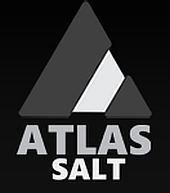 Nexus Gold drills 15 feet of 1.57 g/t Au at Walker
Nexus Gold drills 15 feet of 1.57 g/t Au at Walker
NEXUS GOLD INTERSECTS GOLD MINERALIZATION ON FIRST DRILL HOLE AT WALKER RIDGE, NEVADA
Nexus Gold Corp. has released initial assays received from drill hole WR-2015-01, which confirm gold and silver mineralization has been discovered at its Walker Ridge gold project in the Jerritt Canyon-Independence trend in Nevada.
Summary of results:
- Gold and silver discovered in the lower-plate host rocks;
- Drill hole intersections of mineralization were encountered over a 355-foot section, including:
- 1.57 grams per tonne gold over 15 feet (including 3.22 grams per tonne gold over five feet)
- 10.6 grams per tonne silver over 205 feet (including 18.25 grams per tonne silver over 20 feet);
- Additional 1,700 feet of drill core to be assayed;
- Element detection technology (EDT) cluster No. 3 (2,100 feet by 1,800 feet) confirmed as gold bearing;
- Priority drilling to focus on the heart of cluster No. 3 to extend intersection lengths and drill higher-grade mineralization;
- Comprehensive drilling merited on two-square-mile, highly anomalous bull’s-eye target, which includes an additional seven clusters and 33 point-of-interest targets;
- The company is currently permitting an extensive 25-drill-pad program for 2016.
“We are extremely pleased Walker Ridge hosts gold, and equally as pleased to make this announcement on our very first drill hole. Not only have these results strongly supported the geological data sets for the property’s two-square-mile bull’s-eye target area, but they have also correlated extremely well with our model of mineralization in the lower plate,” commented Peter Berdusco, president and chief executive officer of Nexus Gold.
“In addition, the use of Vital GeoSurveys’ element detection technology (EDT) has substantially fast-tracked our discovery of gold mineralization in the host rocks,” continued Mr. Berdusco. “Priority drilling will now focus on the heart of EDT cluster No. 3 to extend the intersection lengths, increase gold grades and define a Carlin-type gold-bearing system. We are also permitting an extensive 25-drill-pad program for 2016 to focus on the property’s additional point-of-interest targets and clusters as identified by the EDT survey. The discovery of mineralization at Walker Ridge is a significant milestone for our company and we look forward to further successes.”
Drill hole intersections of mineralization were encountered over a 355-foot section (2,453 to 2,808 feet) in the lower-plate host rocks. Intersections of 1.57 grams per tonne gold over 15 feet (including 3.22 grams per tonne gold over five feet), 0.46 gram per tonne gold over 10 feet, as well as 10.6 grams per tonne over 205 feet (including 18.25 grams per tonne over 20 feet) of elevated silver, were drilled. A more detailed table of the results is attached. A further 1,700 feet of upper-plate drill core remain to be assayed.
This first hole was designed to test the northern edge of cluster No. 3, as defined in the company’s 2014 EDT survey. It was drilled directly over one of eight locations within cluster No. 3 identified as containing gold atomization. The cluster is strongly supported by the property’s gravity, CSAMT and geochemistry data. Cluster No. 3, which is 2,100 feet by 1,800 feet, is the fourth-largest of eight clusters identified in the 2014 survey as containing gold atomization. The largest of the clusters is cluster No. 4, which is 3,000 feet by 3,500 feet in diameter.
Gold atomization is determined when EDT energy is injected into the property to source a targeted material. In the case of Walker Ridge, the targeted material is gold. If the targeted material is present, a signature response is induced in the targeted material that is specific to this method and permits its detection from the surface. Its detection is then catalogued as a point of interest, which is a point indicating an area that is gold atomized or contains gold atomization.
WR-2015-01 passed into the lower plate at a depth of 1,800 feet. The hole penetrated a series of calcareous dolomites, limestones and clay-cemented breccias of the Roberts Mountain and Hanson Creek formations. Several thin dikes of altered felsic intrusive were also intersected. Extensive intervals of argillic alteration, brecciation and/or free carbon were noted through the core as was disseminated and veinlets of pyrite. The hole continued in the host rocks of the Roberts Mountain and Hanson Creek formations, reaching a total depth of 3,302 feet.
“The lower-plate rocks at Walker Ridge are characterized by extensive zones of brecciation, argillization and free elemental carbon. These are all attributes indicative of a favourable environment for Carlin-type gold deposition. The discovery of precious metals within the lower plate at Walker Ridge was the last remaining component required for the discovery of a gold-bearing system,” commented Dr. Douglas Oliver, vice-president, exploration. “Further drilling at Walker Ridge will consist of penetrating the heart of cluster No. 3 with an objective of intersecting higher-grade gold mineralization.”
A summary of significant intersections within hole WR-2015-01 is shown in the attached table.
WR-2015-01 INTERSECTIONS
From To Length Au Ag
(feet) (feet) (feet) (g/t) (g/t)
2,453 2,658 205 10.5
Including 2,468 2,513 45 12.8
Including 2,568 2,603 35 12.4
Including 2,623 2,643 20 18.3
2,723 2,733 10 0.46
2,793 2,808 15 1.57
Including 2,803 2,808 5 3.22
The above assayed intervals are intercept lengths
and are not true widths.
The hole was drilled vertical (minus 90 degrees).
Analyses were performed by ALS Minerals, an accredited and internationally used firm, with preparation performed at its facility in Elko, Nev., and assays conducted at its facility in Vancouver, B.C. Nexus Gold’s internal quality assurance/quality control program involved the submission of either a blank or one of two gold-silver analytical standards every 50 feet. Examination of the quality assurance/quality control data does not indicate any irregularities in the analytical results.
Walker Ridge gold project
The Walker Ridge gold project is located one mile south of the Big Springs deposit and five miles north of the Jerritt Canyon deposit in Nevada, United States. It is also seven miles north of the Jerritt Canyon mill complex. The 4,690-acre property contains a two-square-mile bull’s-eye of highly anomalous, geochemically defined pathfinder elements (antimony, arsenic and mercury), coincident to geophysical anomalies both in gravity and resistivity. A Carlin-age (Eocene) intrusion, as verified through uranium-lead radiometric age dating (35.9 million years), has been discovered on the property at the centre of the geochemical/geophysical anomalies.
Innovative technology
In the fall of 2014, the company employed Vital GeoSurveys Ltd. to perform a geophysical survey utilizing a leading-edge element detection technology. Prior to the survey on Walker Ridge, the technology had been used primarily in the oil and gas sector over the past five years, accumulating a record of success. The proprietary nature of the innovative technology allows for the in situ detection and the mapping of signals specific to the targeted element. In the case of Walker Ridge, the targeted element is gold. In application, the technology deploys energy, and, if the target element is present, a signature response is detected. The strength of these signature responses is measured and catalogued as points of interest.
The fall 2014 survey identified 34 points of interest occurring in eight clusters over approximately a two-square-mile area within the company’s claim block. Seven of these clusters are coincidental to data sets identified through the company’s previous work programs on the property: anomalous mercury and antimony geochemical levels, a prominent gravity geophysical low coincident to the surface mercury anomaly, and an electromagnetic/magnetotelluric resistivity low/high. The results of the survey, particularly when applied to the existing data sets, potentially reduce the costs normally associated with exploration drilling programs.
The technical content of this release was reviewed and approved by Warren Robb, PGeo, a qualified person within the meaning of National Instrument 43-101.
http://nexusgoldcorp.com/news-releases/
































